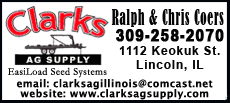 Several products are available to eliminate nuisance fruit. The most
common is ethephon, and it is used as a foliar spray to reduce or
eliminate undesirable fruit or seeds. A couple of the trade names
are Florel and Ethrel. The product is effective at eliminating much
of the fruit without affecting leaf growth and color, and it does
not harm other plants that get some spray drift on them. It also
does not affect the actual flowering of the treated trees. Several products are available to eliminate nuisance fruit. The most
common is ethephon, and it is used as a foliar spray to reduce or
eliminate undesirable fruit or seeds. A couple of the trade names
are Florel and Ethrel. The product is effective at eliminating much
of the fruit without affecting leaf growth and color, and it does
not harm other plants that get some spray drift on them. It also
does not affect the actual flowering of the treated trees.With
ethephon, the key is in the timing. The application must be made
during flowering but before the fruit set in. For most flowering
trees there is a 10- to 14-day window of opportunity. Sweet gums are
a little tricky since there are no showy flowers involved, so
effective sprays should occur just as new leaves begin to emerge.
Sprays should leave leaves wet, but not to the point of dripping.
Good coverage of the tree is needed, so keep in mind the size of the
tree when you are weighing this option.
Injectable products are available, but they must be applied by a
professional. The injectable products have not been as effective as
the sprays.

This product is a growth regulator that naturally occurs. Its
natural production is stimulated by stress, so make sure you aren't
treating a tree that is under stress from drought, high
temperatures, diseases or other environmental stresses. Treating
stressed trees can cause severe injury to the plant, such as leaf
loss or scorching.
Lawn updates
Crabgrass seed has already germinated and will continue to do so
throughout the spring and summer months. Preventive treatments will
still do some good for seed that will germinate over the next six to
eight weeks, but treatments won't get seeds that have already
germinated. The organic arsenicals, such as DSMA and MSMA, will
control newly germinated grass. Remember, you should have a second
preventive application around June 1 for summer control of crabgrass
and other annual grasses.
[to top of second column] |

The time to begin mowing has already arrived in some areas, and
there are a few very simple rules for mowing grass. The first is to
use equipment that is ready for the job. Make sure the mower has
sharp blades. Dull blades will show up as injury on the grass
blades, like brown tips and jagged edges. Blades can be sharpened in
several ways. Using a file or grinder are the more common methods.
Next is the rule of one-third. Never remove more than one-third
of the leaf blade at any one time. This rule must be followed if you
don't want to catch or rake the grass. A good general mowing height
for combination bluegrass and fine fescue is about 2 inches. This
would mean that you would need to mow every time the grass reaches 3
inches in height.
Bagging grass clippings may actually add to the buildup of thatch
-- that dead, matted layer on the soil surface. Thatch is broken
down by microbes at the soil surface. Without a food source, the
microbe numbers crash, and any clippings remain without breaking
down.
Mulching is OK. It isn't a cure-all, and it does take quite a bit
of extra power to accomplish. The final word is that grass mowed on
the one-third rule doesn't need to be caught or mulched. Bagging
takes time and the clippings must then be disposed of. Mulching
takes extra power and fuel.
Mowing intervals depend upon grass growth rather than a calendar
schedule. The spring and fall periods will require more frequent
mowing than during the summer. That is in a "normal" year.
Frequent mowing really reduces the labor needed for overall operations.
[By
JOHN FULTON,
University of Illinois Extension]
 |